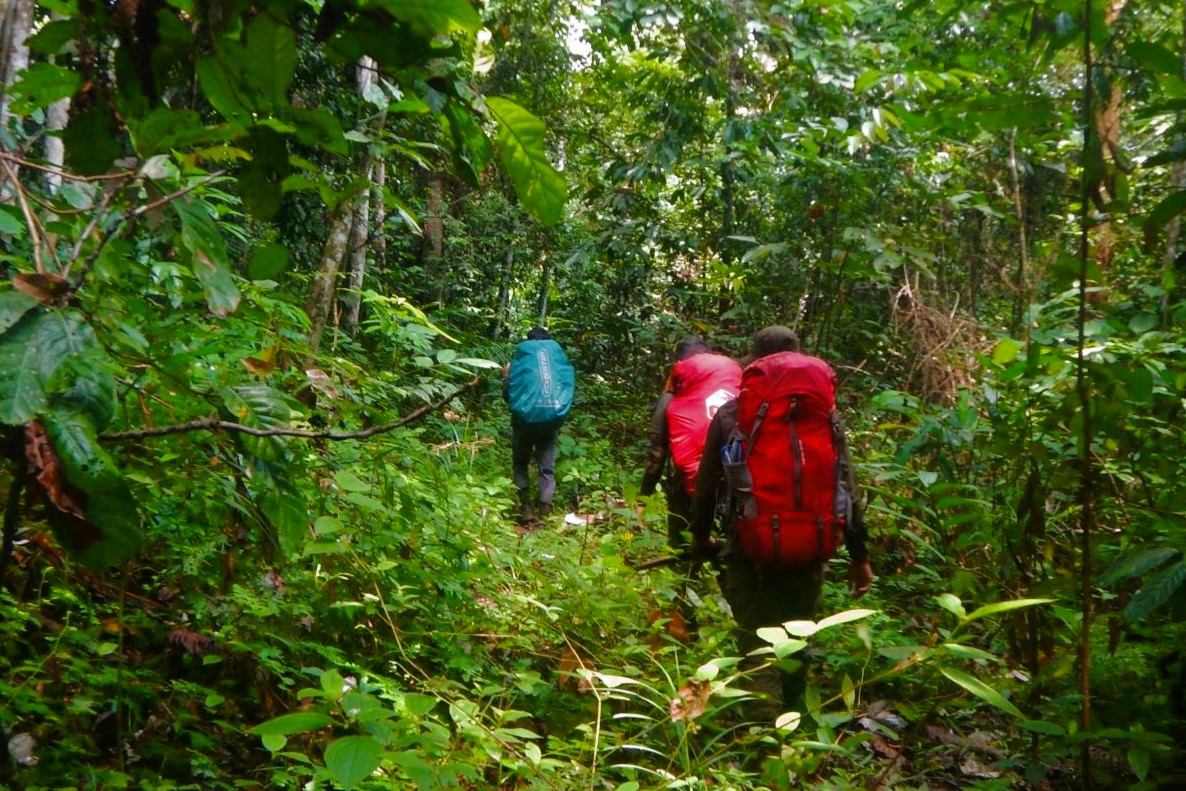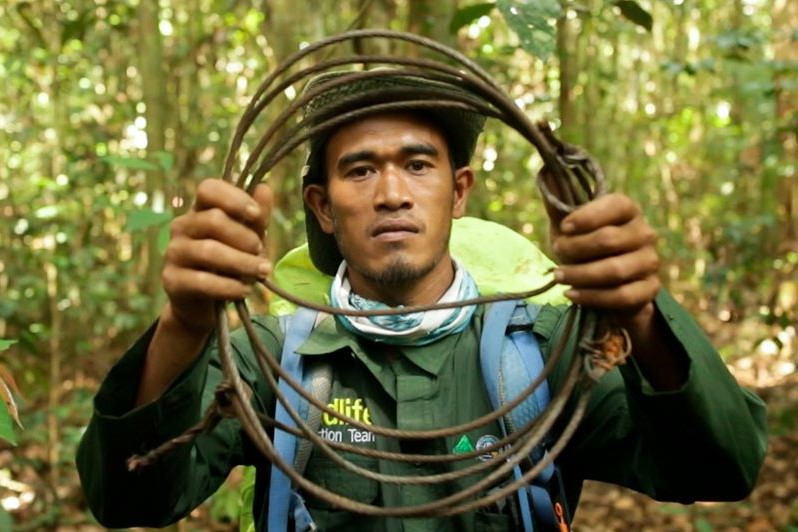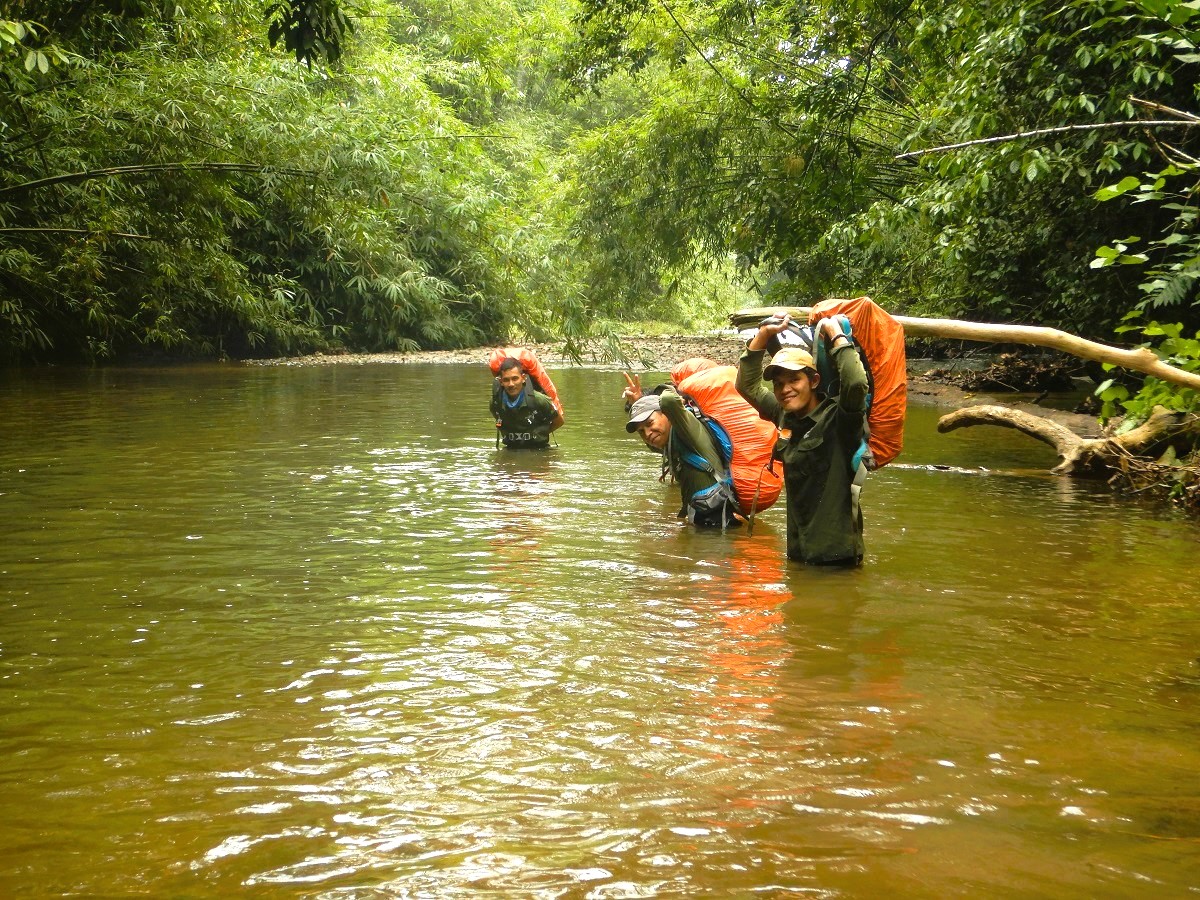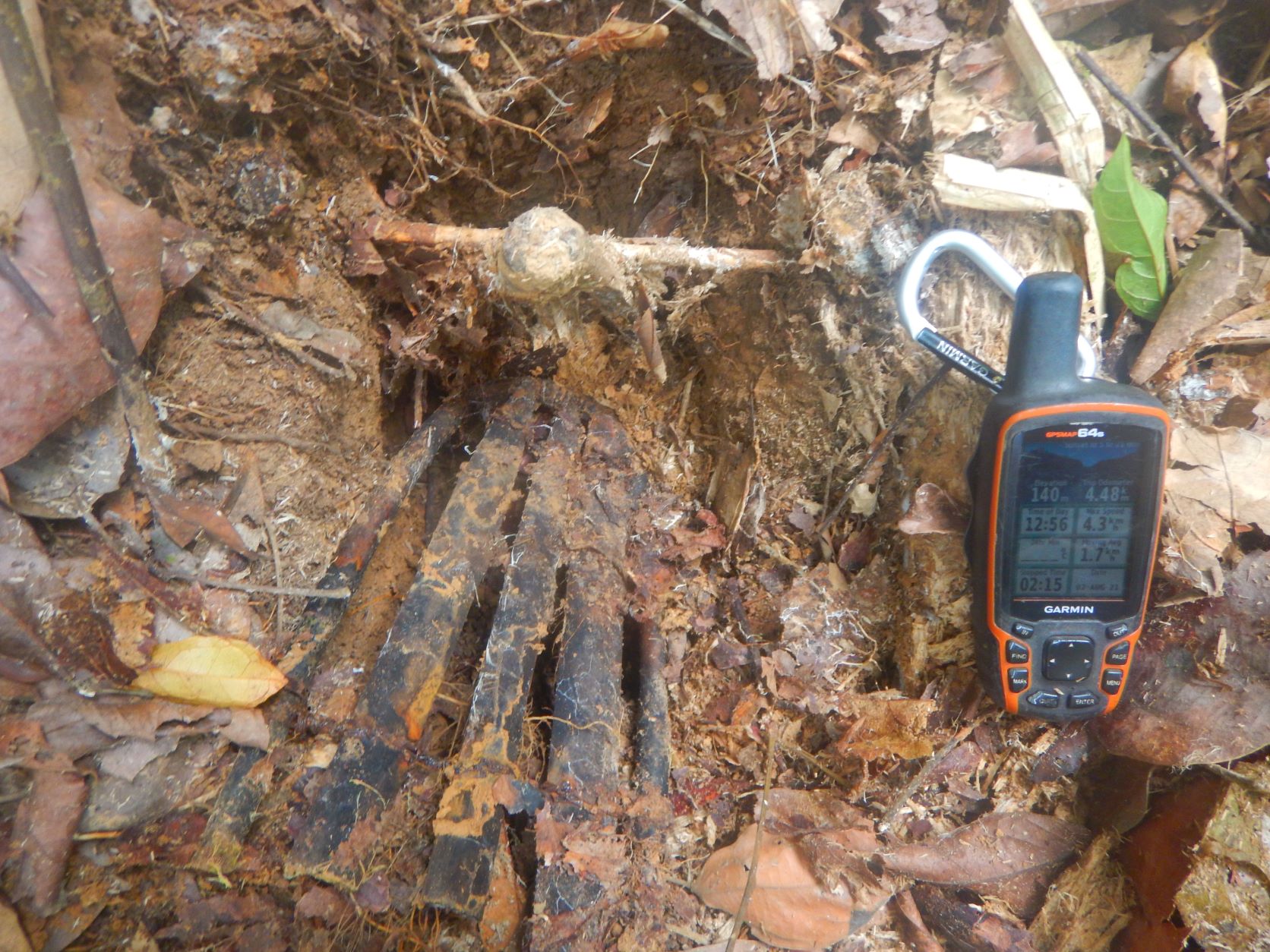We often talk about our wildlife rangers and their role in protecting tigers and their habitat. But what do our rangers actually do? Some days, they undertake training to keep their skills sharp or to learn new things like how to monitor tigers through camera traps. Some days they focus on community engagement, visiting rural villages and speaking to farmers or school children about the importance of wildlife conservation. But when they’re out in the forest, their days are varied, interesting, and at times even dangerous. Here’s an average day in the life of a wildlife ranger in the jungle.
_(credit_jun_ha)_reduced.jpg)
Above: Some of the rangers deployed by our partner FKL (Forum Konservasi Leuser)
6am
Wake in a tent with the sounds of the jungle all around, from gibbons calling to birds singing and insects buzzing. The forest isn’t too hot just yet. Wash our faces, hands and feet in the river if we’ve camped near one and prepare our breakfast. Two of us light the fire, one collects water, while the other two or three of us cook food and boil water.
6.30am
Have breakfast cooked on a fire, and of course hot sweet tea is a must. Probably two cups if we have time. Chat to the team about our route today and discuss any dangers such as flooded rivers, landslides, or increased human-wildlife conflict on the forest fringe. There are no urgent reports of a stranded or ensnared tiger, so we stick to our plan of patrolling a snare hotspot. But if we get the call that a tiger is in trouble, all today’s plans will go out the window. Saving the tiger then becomes the only priority.
7am
Pack down the tents, douse the fire, and check all our equipment is in working order. It’s the wet season, and we hope our boots and uniforms have dried out a little overnight. Put our packs on our backs and get started, walking single file through the forest. Sometimes we sing songs if we need to encourage each other. But in the morning, the sounds of wildlife and the calm and cool of the forest are enough.

7.30am
We head towards a part of the forest where we’ve found many snares in the past. Snares are often laid by hunters to catch wild boar or deer, but some are set especially to catch tigers for the illegal trade in their body parts. Regardless of the cause, any snare can mean death for these beautiful big cats. Searching for and dismantling snares is such an important part of our role and we never take the responsibility lightly.
Using machetes to create simple paths through the jungle, we take note of signs of wildlife when we find them, such as tiger claw marks on trees or tiger pugmarks (another word for tiger footprints). Using our GPS monitors, we record where we see the wildlife signs and where we encounter snares. Finding snares can be difficult, as they’re well-hidden to trick wildlife. We must hunt through the undergrowth and under leaves to find them, but we know that every snare removed is a life saved.

Above: FKL rangers are always alert for snares of any size
10am
We reach a large river that’s swollen from heavy rain. Our packs are covered in waterproof plastic, but we carry them high to avoid them getting caught in the current. The river is moving swiftly, and it’s hard work to battle against it to reach the other side, where we need to continue.

10.30am
We catch sight of a trap made from small slats of wood, which is hidden in the undergrowth. On top of it is a simple rope snare, designed to snap around a tiger’s paw and collapse under its body weight. Escape would be impossible. As soon as a tiger steps into the hidden loop of rope, the end is near. We stop to inspect the snare and trap carefully. We take photos of it on our phones and record its position with a GPS unit.

Above: The simple trap set to catch a tiger, which had been hidden by leaves and is now unable to inflict damage thanks to our rangers
Before we destroy the snare and trap, we get some good photos of it. One ranger puts his boot into the middle of the snare, triggering it. It wraps around his boot, but doesn't injure him thanks to his tough hiking boot. But if a tiger had stepped into the snare, it would have most likely died alone in the jungle. We cut the rope and dismantle the trap, filling it in with dirt and leaves so no animals can become captured.
11.30am
Two hundred metres away we find more snares. This is more than we found last time we were here, which is a worrying sign. On a recent patrol in a different part of the forest, we found only one snare, a sign that our community engagement is working in that area. We discuss the need to undertake more engagement with the communities living near this part of the forest. We want to make sure they know it's illegal to set snares for hunting, so we decide to meet with farmers on this patrol.

A huge haul of snares from just one patrol in the Leuser Ecosystem
12.30pm
Just as we’re finishing our midday meal, our team leader receives an urgent call on his satellite phone. It’s the Ministry of Forestry and Environment (BKSDA) with news that a subadult female tiger has been seen in the forest with a severe injury from a snare. The local community have contacted them to let them know and they’ve called us - this is a good sign the villagers are becoming more aware of the need to protect wildlife. Our engagement is working - but we need to do more.
Without stopping to rest, we set off at a faster pace than before. This is always the hardest part of our job. What will we find? Will we be able to save the tiger? How easy will it be to capture her, and will she survive the process of capture and medical attention? Tigers can become quite panicked when they’re close to humans, so any intervention is dangerous for the tiger and us. But if she’s severely injured, we may have to step in and provide medical care in the forest. We race towards the wounded tiger, not knowing what we’re going to find.
Above: A video of wildlife rangers speeding down the river in the Leuser Ecosystem, which is just one of the transport modes they take to reach tigers in distress
Stay tuned for Part Two of A Day in the Life of a Ranger - coming next month!
